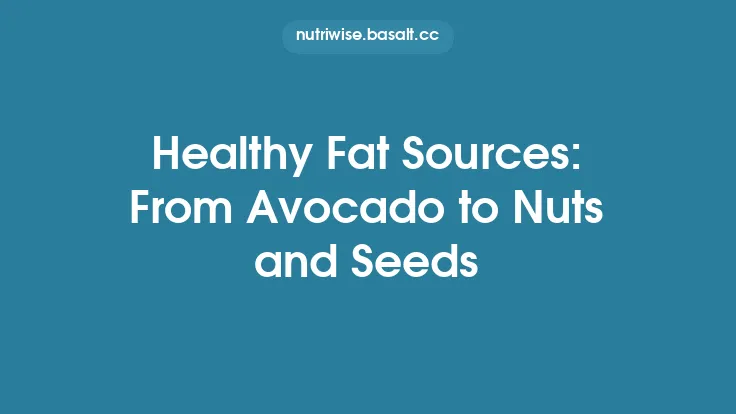The human relationship with food has always been more than a matter of sustenance. Long before the advent of laboratory analysis, societies wove elaborate narratives around what could be eaten, when, and why. Myths about divine gifts, heroic feasts, and magical elixirs served as cultural scaffolding for practical observations about health and the environment. Over centuries, these stories crystallized into enduring beliefs that continue to shape how people think about well‑being, even as modern nutrition science offers new lenses for interpretation. This article traces the evolution of those beliefs—from mythic origins to the present day—highlighting the underlying principles that have proven remarkably resilient across time and geography.
Ancient Cosmologies and the Classification of Food
Early medical systems sought to explain health through the balance of opposing forces. In ancient Greece, the humoral theory posited that four bodily fluids—blood, phlegm, yellow bile, and black bile—governed temperament and disease. Foods were classified according to their perceived effect on these humors: “dry” foods (e.g., wheat) were thought to increase dryness, while “moist” foods (e.g., honey) countered it.
Similarly, Ayurvedic medicine, rooted in the Indian subcontinent, introduced the concepts of doshas (Vata, Pitta, Kapha) and six tastes (sweet, sour, salty, bitter, pungent, astringent). Each taste was believed to influence the doshas in predictable ways; for instance, bitter foods were thought to pacify Pitta (the fire element) and stimulate digestion.
Traditional Chinese Medicine (TCM) added another layer, categorizing foods by five flavors (sweet, sour, bitter, salty, pungent) and energetic properties (warming, cooling, neutral). A “warming” food such as ginger was prescribed to counteract “cold” conditions like chills or poor circulation.
These classification schemes, though culturally distinct, share a common thread: they map sensory qualities and perceived energetic effects onto a framework of bodily balance. Modern research often finds physiological correlates—spicy foods increase thermogenesis, bitter compounds can stimulate digestive secretions—suggesting that ancient observations were grounded in empirical experience, later codified into mythic cosmologies.
The Doctrine of Signatures: When Form Guides Function
A pervasive belief across many pre‑modern societies was that the appearance of a plant hinted at its therapeutic purpose—a principle known as the *doctrine of signatures*. The notion held that nature’s “signs” were intentional clues left by a higher order. For example:
- Walnuts, resembling the brain, were thought to enhance cognition. Contemporary studies confirm that walnuts are rich in omega‑3 fatty acids and polyphenols that support neuronal health.
- Red berries, reminiscent of blood, were prescribed for circulatory ailments. Many such berries (e.g., cranberries, lingonberries) contain anthocyanins with vasodilatory and anti‑inflammatory properties.
- Liverwort, with its liver‑shaped lobes, was used to treat hepatic disorders. While the plant itself is not a mainstream hepatoprotective, the broader pattern of using bitter, hepatically active compounds aligns with this symbolic logic.
Although the doctrine lacks a mechanistic basis, it inadvertently guided early herbalists toward bioactive compounds. Modern phytochemistry often validates these serendipitous matches, revealing that visual analogies sometimes coincided with chemically active constituents. The doctrine thus illustrates how mythic reasoning can intersect with empirical discovery.
Seasonal and Geographic Alignment: Food as a Mirror of Environment
Before global trade networks, communities relied on locally available produce, leading to a seasonal rhythm in diets. This rhythm was encoded in cultural calendars that prescribed specific foods for particular times of year. In the Mediterranean, for instance, the harvest festival celebrated the abundance of olives, grapes, and figs in late summer, while winter diets emphasized preserved legumes and root vegetables.
The rationale extended beyond availability. Seasonal eating aligned with climatic demands: warming foods (e.g., roasted tubers, spiced stews) were consumed during colder months to generate internal heat, whereas cooling foods (e.g., fresh cucumbers, melons) were favored in summer to offset external heat. Geographic factors also dictated staple choices—coastal societies emphasized marine proteins, while high‑altitude cultures relied on hardy grains and dairy.
Modern nutrition science confirms that such alignment can optimize nutrient density and digestive efficiency. For example, vitamin C content in many fruits peaks at full ripeness, which often coincides with the season of peak sunlight, supporting antioxidant defenses when UV exposure is highest. The ancient practice of matching food to season thus reflects an intuitive understanding of environmental synergy.
Food as Medicine: From Mythic Potions to Modern Nutraceuticals
Myths frequently describe food as a magical cure. The “elixir of life” in Chinese legend, made from ginseng and other herbs, promised longevity; the Greek “ambrosia” was said to confer immortality upon the gods. While such claims were hyperbolic, they underscored a belief that certain foods possessed therapeutic potency beyond basic nutrition.
In contemporary terms, this belief manifests as nutraceuticals—food‑derived products with health‑promoting or disease‑preventing properties. Consider:
- Garlic (Allium sativum): Historically hailed for warding off evil spirits and infections, modern studies attribute its cardiovascular benefits to allicin, a sulfur compound that reduces platelet aggregation and lowers blood pressure.
- Turmeric (Curcuma longa): Revered in Ayurvedic texts for its anti‑inflammatory qualities, curcumin—the active polyphenol—has been shown to modulate NF‑κB pathways, offering potential relief in chronic inflammatory conditions.
- Fermented soy (natto, tempeh): Ancient Japanese myths linked fermented soy to strength and vitality. Today, the high levels of vitamin K2 and probiotic bacteria in these foods are recognized for supporting bone health and gut microbiota balance.
The transition from mythic “potions” to evidence‑based nutraceuticals illustrates a continuum: cultural narratives identified promising candidates, and scientific validation later confirmed—or refuted—their efficacy. This synergy continues to drive the discovery of functional foods rooted in traditional knowledge.
Balancing Energetics: Hot, Cold, and Neutral Foods in Health Maintenance
One of the most persistent belief systems classifies foods by thermal nature—hot, cold, or neutral. In TCM, a “hot” food (e.g., chili peppers) is thought to raise body temperature and stimulate circulation, while a “cold” food (e.g., watermelon) is believed to cool internal heat and calm inflammation. Ayurveda employs a similar dichotomy, describing “heating” (ushna) and “cooling” (shita) foods that influence the doshas.
Scientific inquiry provides partial explanations:
- Thermogenic effect: Capsaicin in hot peppers activates transient receptor potential vanilloid 1 (TRPV1) channels, increasing metabolic rate and heat production.
- Vasodilatory compounds: Menthol and certain flavonoids in cooling foods cause peripheral vasodilation, facilitating heat loss.
- Metabolic load: High‑protein, high‑fat foods require more energy for digestion (the thermic effect of food), contributing to a perceived “warming” sensation.
While the binary classification oversimplifies complex metabolic responses, it offers a practical heuristic for individuals to modulate internal sensations and address seasonal discomfort. Modern dietary guidelines sometimes echo this logic, recommending “warming” soups in winter and “cooling” salads in summer, albeit framed in terms of macronutrient composition rather than mystical energetics.
Ritualized Consumption for Well‑Being: Fasting, Feasting, and Structured Eating Patterns
Across cultures, ritualized eating patterns have been employed to promote health, often embedded within mythic narratives of purification or renewal. Periodic fasting—whether a single day of abstention or longer seasonal fasts—was traditionally viewed as a means to cleanse the body of toxins and reset internal balance.
Anthropological records reveal that many societies timed fasts to coincide with agricultural cycles: post‑harvest periods when food stores were abundant allowed for temporary restriction, while pre‑planting seasons offered a natural lull in food availability. These practices inadvertently introduced metabolic stressors that modern science recognizes as beneficial:
- Autophagy activation: Short‑term caloric restriction triggers cellular recycling pathways, removing damaged proteins and organelles.
- Insulin sensitivity improvement: Intermittent fasting can lower fasting insulin levels, enhancing glucose uptake.
- Hormetic stress response: Controlled stressors, such as fasting, stimulate adaptive physiological responses that increase resilience.
Conversely, feasting festivals—celebrations marked by abundant, often rich foods—served to replenish depleted energy reserves after periods of scarcity. The cyclical alternation between restriction and abundance created a homeostatic rhythm that balanced caloric intake over the year. While modern lifestyles have largely decoupled these patterns from environmental cues, the underlying principle of structured eating remains relevant for contemporary health strategies.
Microbial Perspectives: How Traditional Beliefs Anticipated Gut Health
Many ancient food practices, though framed in mythic terms, inadvertently cultivated a beneficial gut microbiome. Fermentation, a cornerstone of food preservation in numerous cultures, was often described as a “living” or “spiritual” transformation of raw ingredients. For example:
- Kefir grains were believed to contain “good spirits” that protect against illness.
- Sauerkraut was touted in European folklore as a remedy for “winter colds,” a time when fresh produce was scarce.
Modern microbiology confirms that these fermented foods are rich sources of lactic acid bacteria, yeasts, and bioactive metabolites that:
- Enhance intestinal barrier function by producing short‑chain fatty acids (SCFAs) like butyrate.
- Modulate immune responses, reducing systemic inflammation.
- Compete with pathogenic microbes, lowering infection risk.
The traditional emphasis on seasonal fermentation—e.g., making kimchi in late autumn to store through winter—mirrored an intuitive understanding of the need for continuous microbial exposure when fresh vegetables were unavailable. Thus, mythic narratives about “living foods” anticipated the scientific recognition of the gut microbiome’s central role in overall well‑being.
Integrating Mythic Knowledge with Contemporary Nutrition Science
The persistence of ancient food beliefs underscores a cumulative knowledge base built on observation, trial, and cultural transmission. To harness this legacy responsibly, modern practitioners should:
- Critically evaluate each belief against current evidence, distinguishing empirically supported mechanisms from symbolic embellishments.
- Contextualize traditional practices within today’s dietary patterns, recognizing that some recommendations (e.g., excessive consumption of “warming” spices) may need moderation in populations with specific health conditions.
- Preserve cultural relevance by collaborating with community elders and healers, ensuring that interventions respect the symbolic dimensions that give food its meaning.
- Leverage synergistic insights—for instance, using the doctrine of signatures as a heuristic for bioprospecting novel phytochemicals, while employing rigorous pharmacological testing.
By treating mythic food narratives as hypotheses rather than dogma, researchers and clinicians can expand the repertoire of functional foods, enrich dietary guidelines, and honor the cultural heritage that has long guided human health.
The journey from mythic tales of divine feasts to scientifically validated concepts of nutrition illustrates a remarkable continuity: humans have always sought to understand how what we eat influences how we feel. While the language has shifted—from gods and spirits to molecules and pathways—the core impulse remains the same. Recognizing the value embedded in these enduring beliefs allows us to build a more holistic, culturally attuned approach to well‑being—one that respects the stories of the past while embracing the rigor of modern science.





